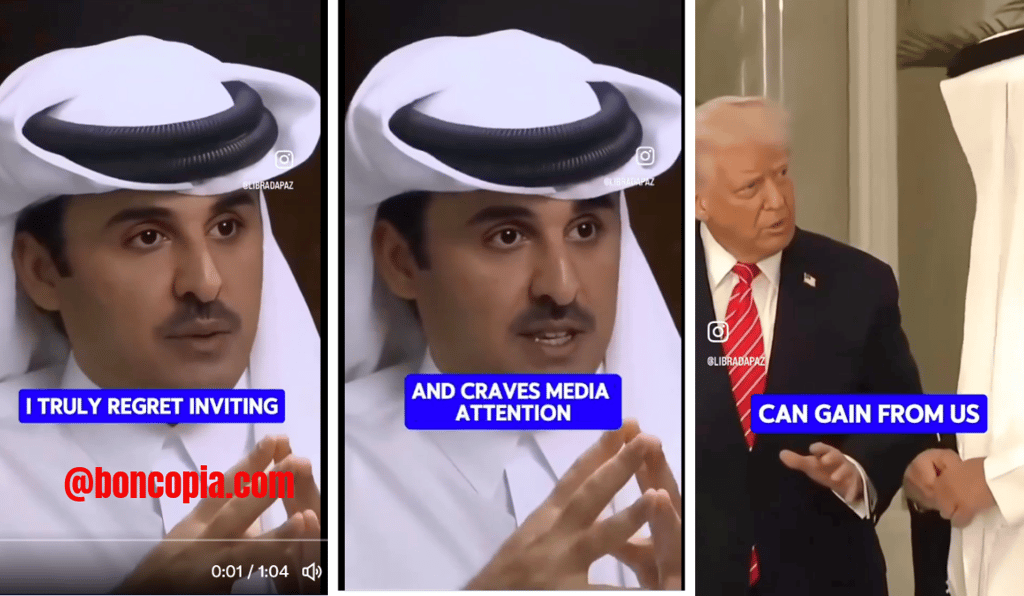Unmasking the Truth: Navigating Deepfakes and Misinformation in the Digital Age
5/19/20253 min read


Unmasking the Truth: Navigating Deepfakes and Misinformation in the Digital Age
In today's digital landscape, the line between reality and fabrication is increasingly blurred, thanks to the rise of deepfakes and misinformation. A recent video circulating on social media, purportedly featuring a Middle Eastern leader critiquing former U.S. President Donald Trump's diplomatic approach, exemplifies this challenge. This blog post, crafted for Boncopia.com under the category "Tool for Understanding" and sub-category "Media Literacy," aims to engage readers with a compelling analysis of this phenomenon, offering tools to discern truth from fiction.
The Deepfake Dilemma
Deepfakes, a term derived from "deep learning" and "fake," represent synthetic media where a person's likeness is superimposed onto another. The technology behind deepfakes has evolved rapidly, making it a potent tool for misinformation. A 2024 study from the University of Rochester underscores the concern over deepfakes in political discourse, noting that while the technology is advancing, detecting these fabrications remains difficult due to the extensive training data required.
The video in question, which gained traction on platforms like X (formerly Twitter), presents a narrative that aligns with some criticisms of Trump's foreign policy but lacks credible verification. This discrepancy is a red flag. The absence of confirmation from reputable sources or official statements from the individuals involved suggests that the video may be a deepfake, designed to influence public opinion rather than inform it.
The Ripple Effect on Public Discourse
Misinformation, whether through deepfakes or other means, can significantly impact public discourse. The 2025 Democracy Perception Index reported a decline in U.S. global popularity following Trump's return, particularly in EU countries. This decline was partly attributed to perceptions shaped by misleading content on social media, amplified by platforms' algorithms.
The video's narrative, while resonant with some international sentiments, highlights the danger of misinformation. It can shape perceptions, influence electoral outcomes, and erode trust in institutions. A 2019 study in the Journal of Communication found that interactions with false content on Facebook and Twitter had decreased since peak levels, but the problem persists, especially on platforms like Twitter where such content continues to rise.
Tools for Media Literacy
To combat the spread of deepfakes and misinformation, media literacy is essential. Here are some strategies:
Source Verification: Always check the credibility of the source. The video in question lacks backing from reputable news outlets or official statements, which should prompt skepticism.
Contextual Analysis: Evaluate the context. Does the content align with known events or statements? The critique of Trump's diplomacy in the video, while plausible, does not correspond with documented interactions, suggesting manipulation.
Technical Clues: Look for inconsistencies. Deepfakes often have subtle artifacts, such as unnatural facial movements or mismatched audio-visual synchronization. These clues, though hard to detect, are indicative of fabrication.
Cross-Referencing: Use multiple sources to cross-reference information. The Institut Montaigne's 2023 report on disinformation emphasized the importance of cross-analysis to identify potential falsehoods.
Critical Thinking: Question the intent behind the content. Is it designed to inform, persuade, or mislead? The video's circulation on social media, particularly in a politically charged context, suggests an agenda that warrants scrutiny.
The Role of Social Media Platforms
Social media platforms are both enablers and gatekeepers of misinformation. In response to growing concerns, platforms like Facebook and Twitter have implemented measures to limit false content. However, as noted in the 2019 Journal of Communication study, the effectiveness of these measures varies. Facebook has seen a decline in interactions with false content, while Twitter continues to face challenges.
Transparency is crucial. Platforms should provide users with information about why certain content appears on their feeds, as suggested by the Institut Montaigne. This includes details on algorithmic recommendations and data categorization, which can help users understand the context and potential biases of the content they consume.
Historical Context and International Relations
The video's narrative also touches on historical diplomatic tensions. Trump's interactions with Israeli Prime Minister Benjamin Netanyahu, for instance, were marked by strained relations over Middle East policies, including the Abraham Accords and U.S. interactions with Iran. This context provides a backdrop for understanding the potential motivations behind such fabrications, as they may aim to exploit existing divides or shape perceptions of U.S. foreign policy.
Thought Questions
As we navigate this digital maze, consider the following questions:
How can we balance the need for free expression with the responsibility to curb misinformation?
What role should educational institutions play in teaching media literacy from a young age?
Are current technological solutions to detect deepfakes sufficient, or do we need more robust regulatory frameworks?
In conclusion, the ability to critically assess media content is more important than ever. By employing tools for understanding and fostering media literacy, we can better navigate the complexities of the digital age. The video in question serves as a cautionary tale, reminding us that in the world of deepfakes and misinformation, skepticism is not just a virtue—it's a necessity.
hello@boncopia.com
+13286036419
© 2025. All rights reserved.